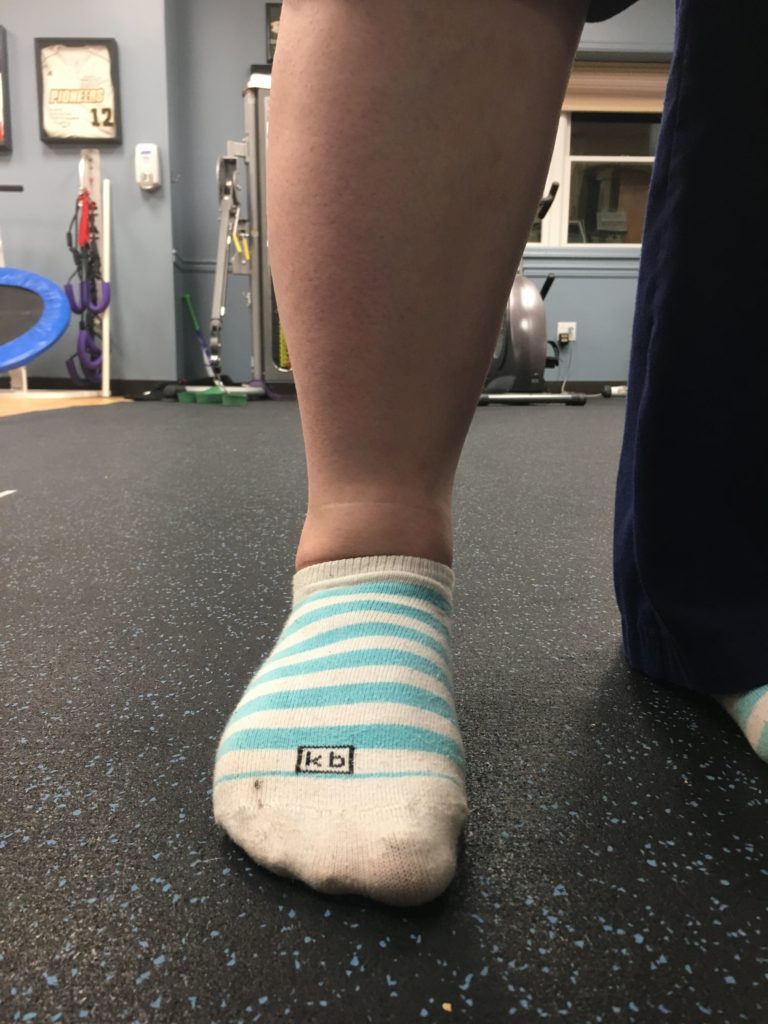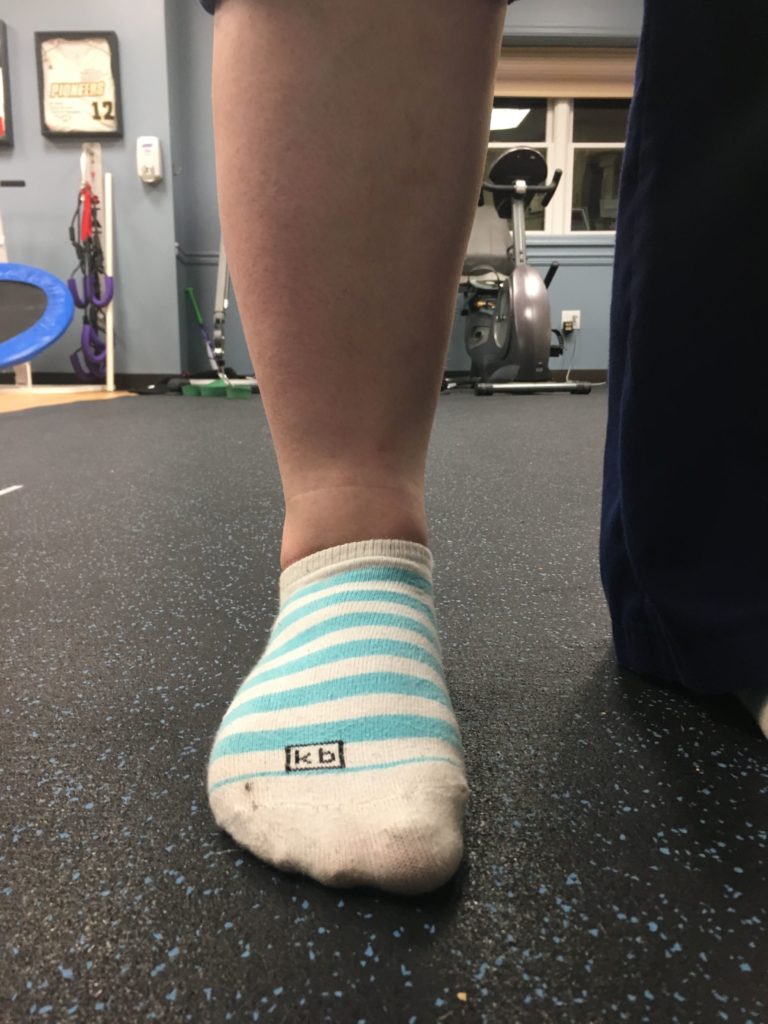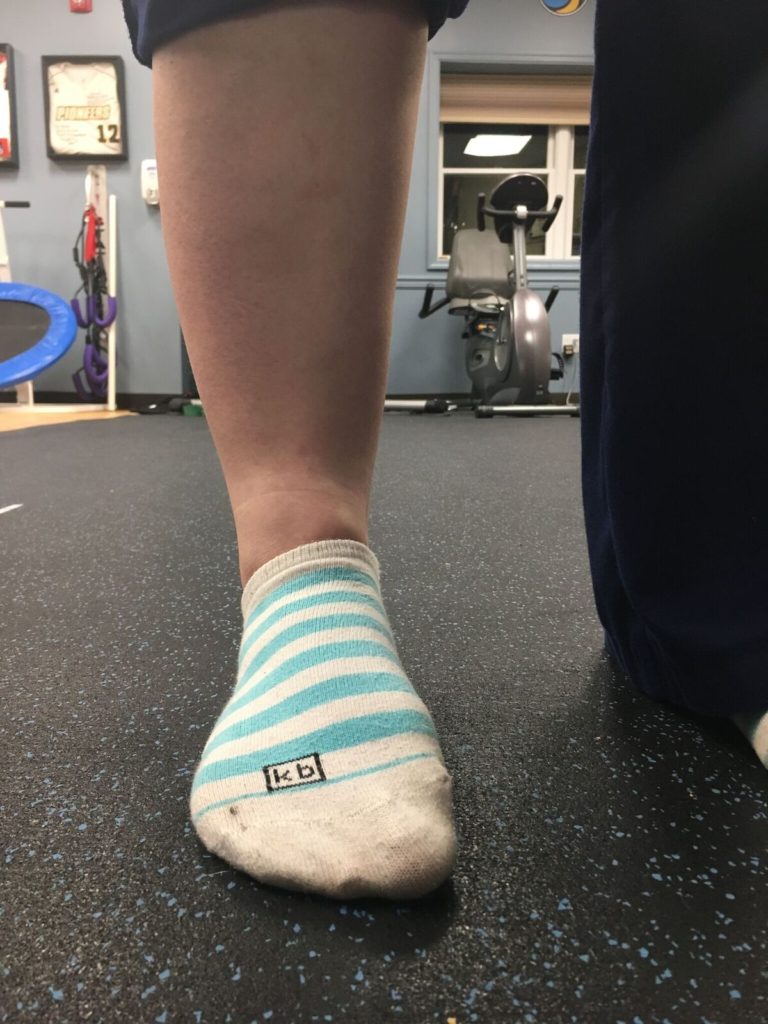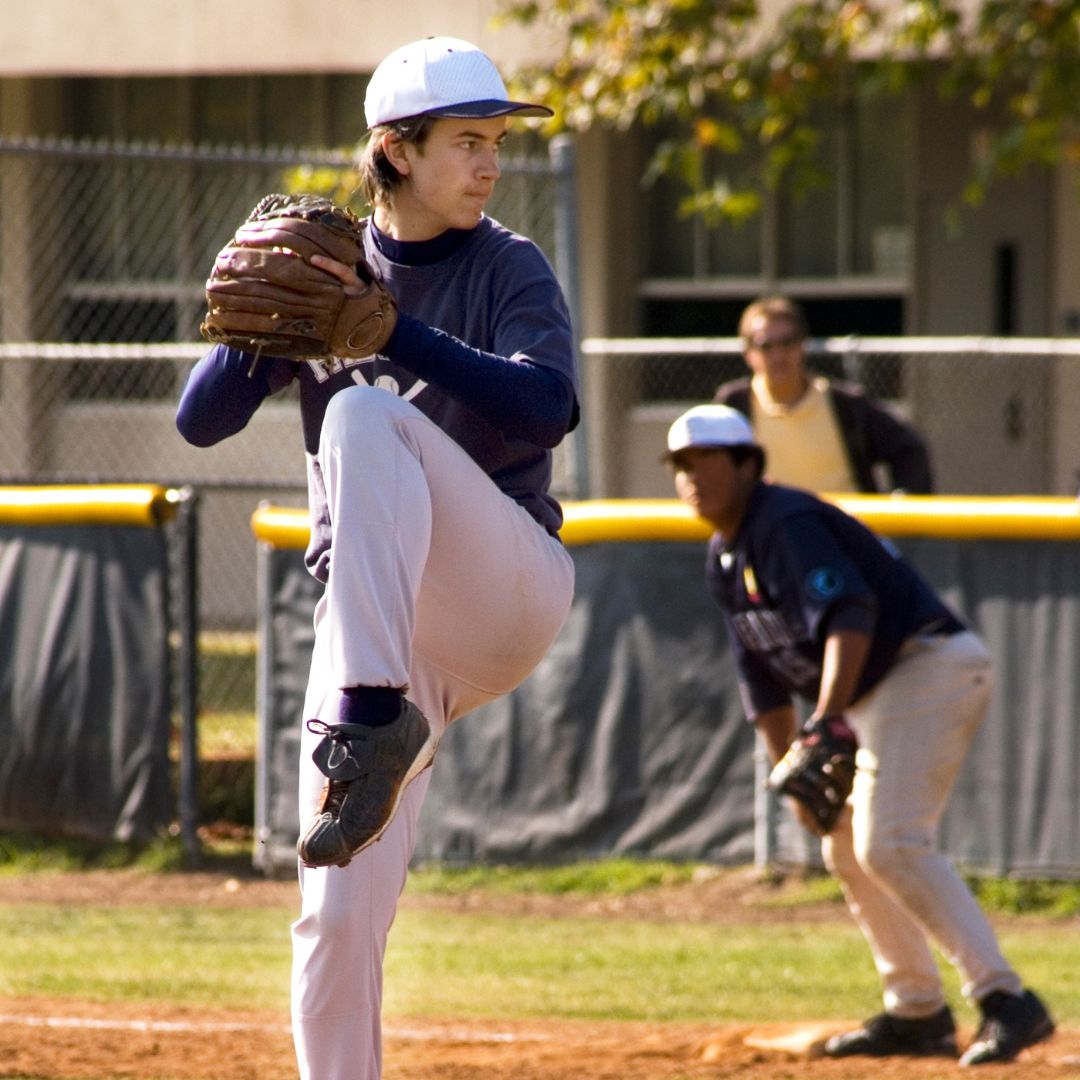“Toe bone connected to the foot bone
Foot bone connected to the heel bone
Heel bone connected to the ankle bone
Ankle bone connected to the shin bone
Shin bone connected to the knee bone
Knee bone connected to the thigh bone
Thigh bone connected to the hip bone
Hip bone connected to the back bone..”
– Dem Bones
Who recognizes that song? I think its fair to assume we’ve all heard this song at some point in our life and disregarded it. Lucky for you, this song actually has significant correlation to the human body. It represents (most likely not purposefully, seeing as it was actually a spiritual song to begin with) regional interdependence in the human body. Regional interdependence, like stated in previous blogs, is the theory that all body parts are connected up and down the chain, and an injury or dysfunction in one area can cause a cascade of issues elsewhere. A perfect example, as you could guess by the title of this blog, is seen in the foot/ankle complex. Dysfunctions in the foot and ankle can cause injury in the shin, knee, hip and low back. Many people ignore the doctors (and physical therapists and chiropractors!) when they tell them to wear supportive shoes, wear orthotics, don’t wear high heels – you get the picture. This blog will explain to you why you shouldn’t ignore these statements and why you should take foot and ankle health seriously.
Anatomy:
This blog will not touch upon every detail of foot and ankle anatomy, however, it will outline the basic, most important structures to consider.
Foot Anatomy:
BONY – The foot is broken down into three sections: 1) The hindfoot, 2) the midfoot, 3) the forefoot.
The Hindfoot is the back of the foot and refers to the end of the tibia, end of the fibula, talus and calcaneus.
The Midfoot, representing the arch of the foot, encompasses the medial, lateral and intermediate cuneiform, the navicular and the cuboid bone.
The Forefoot is made up of the metatarsals and phalanges of the foot.

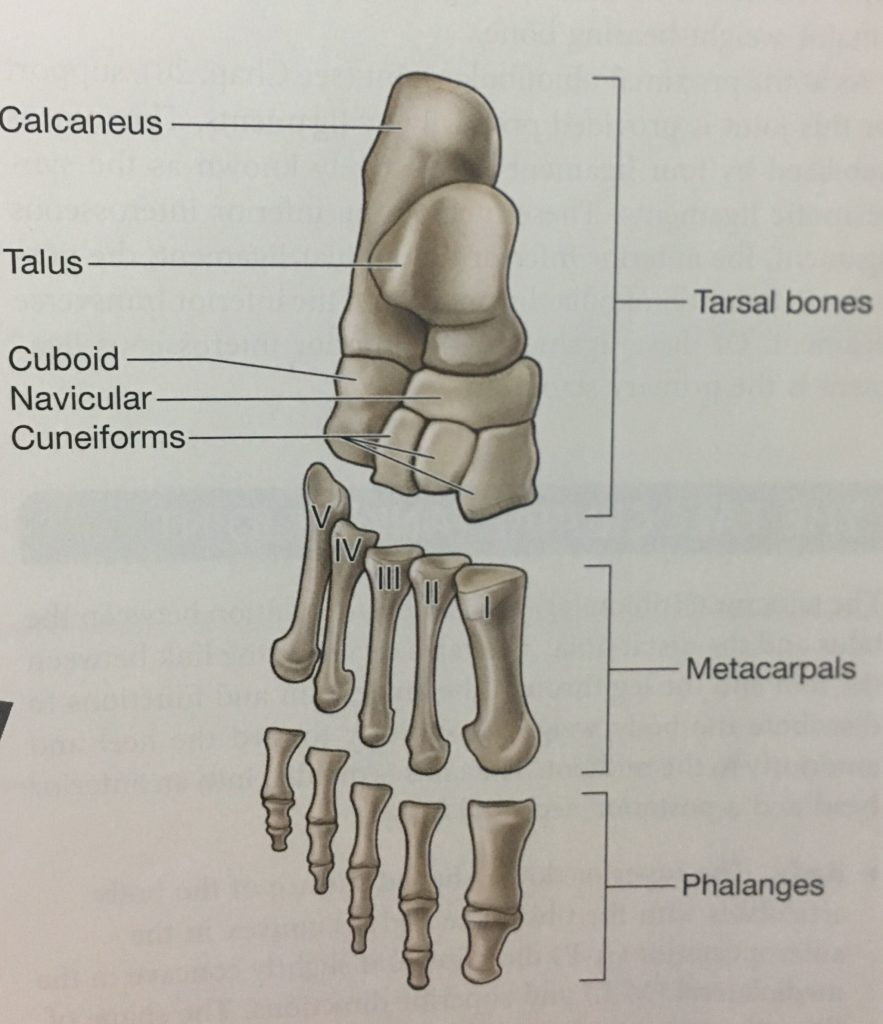
MUSCULAR – There are way too many muscles in the foot to touch upon here, but to break down the basics there are intrinsic and extrinsic muscles in the foot. Intrinsic muscles are the muscles that are ONLY found in the foot – meaning they originate and insert in the foot. Extrinsic muscles are the muscles that cross multiple joints including the foot. Examples of extrinsic muscles are the calf muscles (gastrocnemius and soleus), and the peroneal muscles (the outside of the calf).
ARCHES – Believe it or not, there are actually 3 arches in the foot – two longitudinal (or vertical) arches and one transverse (or horizontal) arch. The two longitudinal arches make up the fundamental longitudinal arch, the basic arch the common population understands to exist. The medial arch is the inside of this arch and contains several muscles and tiny joints. The lateral arch is the outside of your foot and doesn’t have much of an arch at all but plays a crucial role in absorbing shock each time the foot hits the ground. Finally, the transverse arch is a series of small arches that are supported by various ligaments and small muscles as well. Each arch plays an important part of the reaction of the foot and other joints as you strike the ground.
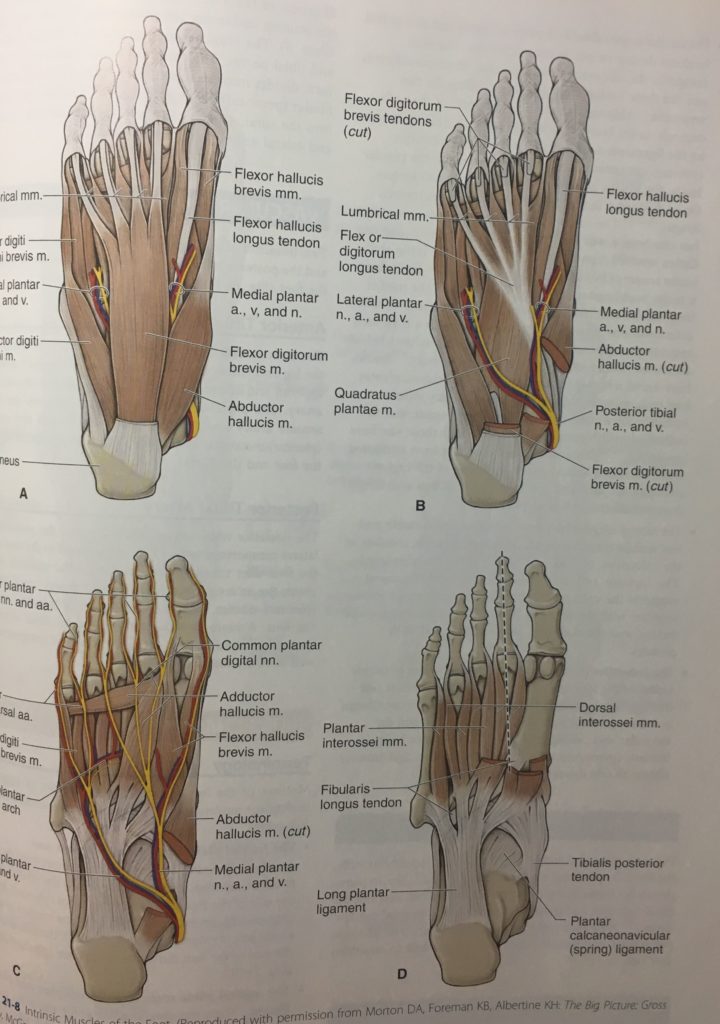
Here at Block Sports Chiropractic & Physical Therapy, our skilled physical therapists and chiropractors have a sound understanding of the anatomy of the foot and how it can affect up and down the chain.
Ankle Anatomy:
The ankle is made up of two joints, the Talocrural joint (TCJ) and the subtalar joint (STJ). The TCJ is made up of the ends of the tibia and fibula (medial and lateral malleolus, respectively) and the talus and assists with up/down movements. The STJ which is made up of the talus and calcaneus, and is most responsible for side-to-side movement. Each of these joints is responsible for the the triplanar nature of the ankle, meaning that is has three degrees of motion. It can move up and down (sagittal plane), side-to-side (frontal plane) and out/in (transverse plane). These motions are referred to plantarflexion/dorsiflexion, abduction/adduction and inversion/eversion, respectively. The three directions can happen at once to give a combined pronation (foot going flat) or supination (arch getting bigger). These joints are surrounded by several muscles and ligaments that provide stability when the foot strikes the ground during walking, running, landing, jumping, etc. Understanding the ankle joint and its biomechanics is complicated, and therefore we won’t touch of it in great length in this blog. However, understand that our chiropractors and physical therapists at Block Sports Chiropractic & Physical Therapy are highly trained to assess ankle joint mobility and whether it is functioning properly.
Most common foot and ankle dysfunctions: It is important to note there are SEVERAL other disorders of the foot not addressed in this blog. We picked only the most commonly known dysfunctions and the ones often found in our Smithtown and Selden, NY clinics.
- Pes Planus – flat arches
- Pes Cavus – high arches
- Hallux Rigidis – stiffness in big toe
- Hallux Valgus (bunions) – big toe goes in toward 2nd toe
- Ankle Instability – the surround ligaments in the ankle are weak and unstable and not strong enough to maintain proper ankle alignment during various activity.

NEUTRAL 
PRONATION 
SUPINATION
Misalignment and its effect on function:
Gait:
- Flat foot posture has been shown to effect gait mechanics. One article explains how those with a flat foot diagnosis have altered muscle activation patterns throughout the phases of gait. For example, during the initial phase of gait, this population demonstrates increased anterior tibialis (muscle along the shin) and decreased peroneus longus (muscle on outside of calf) recruitment. During the later phases of gait, this same population now demonstrates increased posterior tibialis (muscle in back/inside of calf) and decreased peroneus longus activation. This means that the posterior and anterior tibialis are being forced to work harder, while the peroneal muscle isn’t working enough and is weak. This is in turn causing significant muscle imbalances throughout the gait cycle and putting stress on various muscles in the foot ankle ankle, as well as the joints up the chain. This can force the knee, hip and back overcompensation for these imbalances and contribute to additional injury at these locations.
- The great toe (big toe) needs to extend 70 degrees to successfully complete the gait cycle. When this does not occur, the gait cycle is altered. For example, if the toe cannot extend backward fully, the ankle, knee and hip must be activated earlier in the cycle to propel the leg forward. This again, leads to muscle imbalances which can lead to overuse injuries such as muscle strains and spasms.
Pain:
- Another article found that those with pes planus and cavus morphology have pain in areas up the chain. For example, those with pes planus posture had an increase in knee and hip pain, where as those with pes cavus experienced greater foot and ankle pain. This is likely due to overcompensation and misalignment during normal activities due to poor foot mechanics.
- Other articles support the correlation between pes planus and medial tibial stress syndrome – similar to shin splints. They stated that those with flatter feet had an increased risk for stress reactions and fractures to the shin. This problem is often found by our chiropractors and physical therapists in our Selden and Smithtown locations. At Block Chiropractic and Sports Physical Therapy, we often find that the muscles surrounding the shin (anterior tibialis, ankle and toe extensors) have to work extra hard when mobility is lost in the foot and ankle. This leads to the overuse injury known as shin splints.
Sports:
- It is supported in the research that poor landing mechanics due to more over-pronation (flat foot) rather than supination, leave the athlete susceptible to knee and low back injury. If the foot goes flat during landing, the knee will follow by going inward (what we all genu valgus). Genu valgus is a high risk factor for non-contact ACL ruptures. Therefore, poor foot mechanics are in turn a risk factor for ACL tears.
- Poor ankle mobility during squatting and lunging motions can lead to faulty knee and back mechanics as well. During a squat, if the ankles are not moving properly, common compensations are increased trunk flexion and/or genu valgum. When these are present during the squat, there is an increased stress on low back muscles. Therefore, these muscles are at risk during these lifting movements and susceptible to muscle strain and spasms.
- Chronic ankle instability is a common problem in athletes. This refers to the weakness in the ligaments and muscles surround and acting upon the ankle. When instability is present, the ankle is highly susceptible to inversion injury – which typically results in an ankle sprain. Ankle sprains can be very severe and lead to being out of sport for greater than 3 months.
What can you do?:
It is important to take care of your foot and ankle when trying to keep your back and lower body healthy. If a doctor recommends foot orthoses, chances are you should wear them! By keeping proper alignment of the foot and ankle during walking, you can see what you can prevent. Additionally, although they are cute and stylish, you should avoid wearing high heels, flat sandals and flat sneakers – yes that includes converse. These do not support your natural arch and can lead to poor gait mechanics and standing posture. Sometimes, poor foot posture and misalignment can be genetic. In these cases, it is especially important to wear proper footwear and orthoses to prevent further damage.
Our chiropractors and physical therapists at Block Sports and Physical Therapy are highly trained to asses the foot and ankle joint. We have a gait analysis in our clinic that can be used to determine various foot dysfunctions and create the appropriate orthotic. Additionally, we have several providers trained in the the Functional Movement Screen (FMS) and Selective Functional Movement Assessment (SFMA) that can determine muscle imbalances or foot abnormalities while observing various functional movements. It is important to seek help if you feel you may have one of the aforementioned disorders, or if you feel your walking, squatting or sports activities cause you pain. It may be coming from your foot!
Below is a video of a gait scan that can be performed in our outpatient clinic in Smithtown, NY and Selden, NY.

